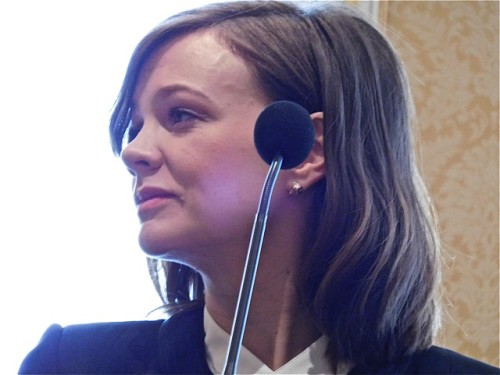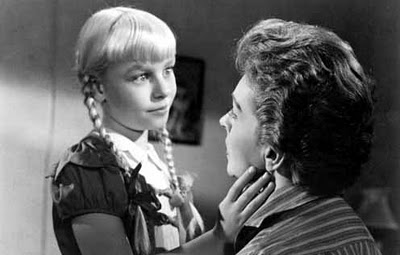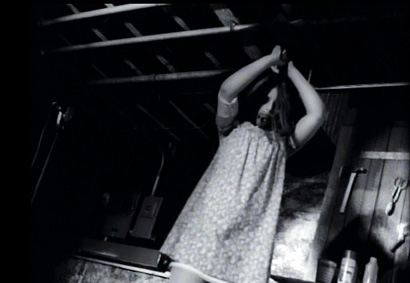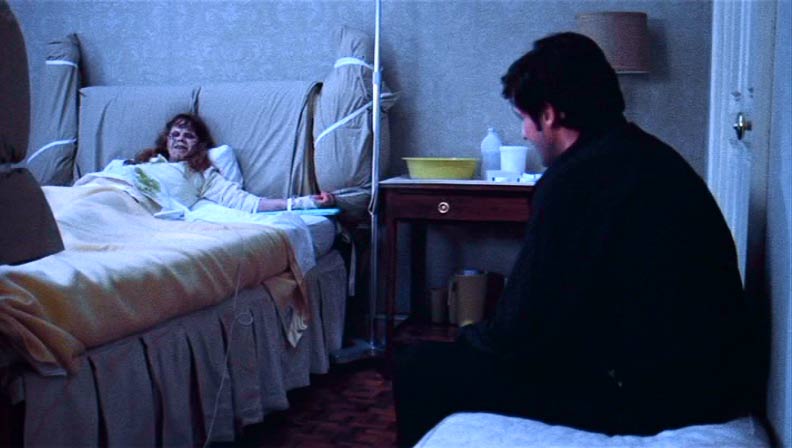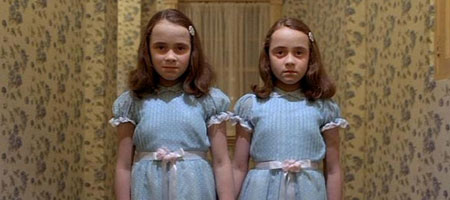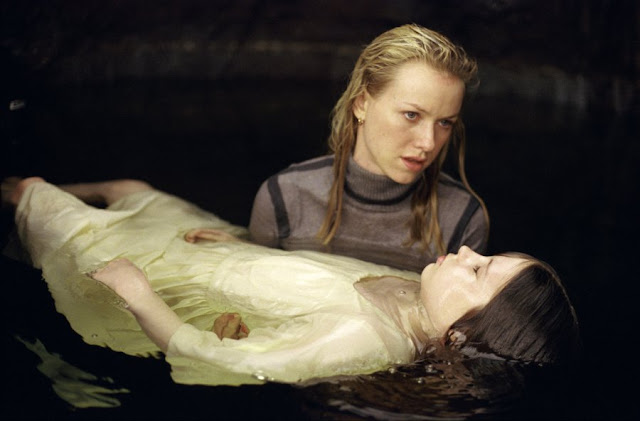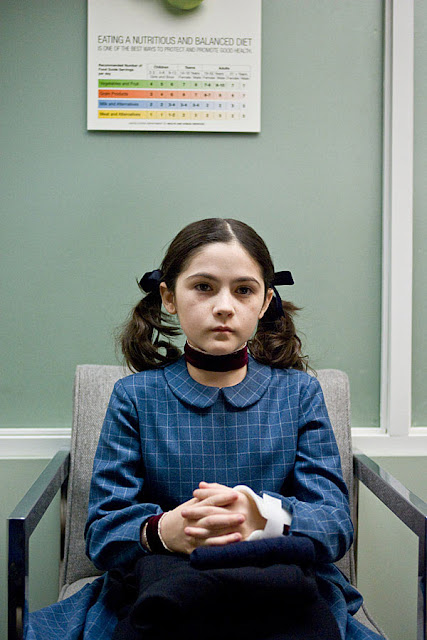
This is a guest post by Paula Schwartz.
Carey Mulligan took time off last week from her duties in the Broadway revival of David Hare’s 1995 drama, Skylight, to promote her new film, Far From the Madding Crowd, based on the 1874 Thomas Hardy novel. In Skylight, for which Mulligan just earned a Tony nomination, the English actress plays Kyra, a teacher in an urban London school who struggles to be independent and lead a life of purpose when her former, much older lover, a wealthy restaurateur (Bill Nighy), tries to worm his way back into her life after his wife dies.
In Far From the Madding Crowd, Mulligan plays Bathsheba Everdene, a country girl who inherits her uncle’s farm, and takes a crash course in how to shear sheep, plant crops and run a manor. Bathsheba’s last name sounds familiar because it inspired the naming of the feminine heroine of The Hunger Games, Katniss Everdeen. Like Katniss, Bathsheba is willful and independent. When she’s forced to behave in ways contrary to her nature, Bathsheba also wears elaborate costumes, with corsets and cinched waists that restrain and confine her and seem fetishistic.
Despite the different historical periods, the women Mulligan plays in Skylight and Far From the Madding Crowd, also have similar concerns; they are complicated, ambitious and brainy women who struggle to find their identity and place in the world, even as men and society try to control them.
Directed by Thomas Vinterberg with a script by David Nicholls, the film fixes on the darkness and perversity just below the surface of restrained and repressed Victorian life. Vinterberg – just as he showed in his last film, The Hunt – finds nature as beautiful and powerful as it is unfeeling and scary. Charlotte Bruus Christensen filmed the luscious, sun-soaked vistas of the English countryside, filled with enough sheep to make anyone consider becoming a vegetarian, particularly after one tragic sequence involving cliffs.
Practical, stubborn, smart, sharp-tongued – even irritating at times – Bathsheba struggles to be independent in a world in which a women’s life is circumscribed by society and custom. While marriage isn’t even on her radar, Victorian society pushes her to find a husband. Soon a trio of very different suitors, played by Matthias Schoenaerts, Michael Sheen and Tom Sturridge, propose marriage. Shocking in her day as much for her sex drive as for her independent lifestyle, Bathsheba chooses for love and desire rather than security or advancement. She is modern and relatable in her pursuits, drives, flaws and contradictions. She chooses the wrong guy when the right one is right under her nose.

Following are highlights from the press conference with Carey Mulligan, where among other things, she talked about her character, her collaborative work with her co-stars and director, the elaborate costumes, and how expert she became handling sheep:
Can you talk about how Bathsheba is unique for the time she’s living in?
Carey Mulligan: I’d never read the book. I still haven’t. When I read it, that’s what I was most excited about, that it was a story that started with a woman who turned down a proposal of marriage and a good one… a really good one in our film.
It’s a young woman in a Victorian classic that isn’t looking to be married and isn’t looking to be defined by a man. It hasn’t even crossed her mind. That’s what was so exciting. That’s obviously not the viewpoint of most women during that time and throughout the whole story, she sort of enjoys bucking social convention, being different. That’s who she is. There’s so much to her. She’s incredibly complicated and stubborn, fallible, spontaneous and impetuous and all these things mixed together.
Do you find that there’s a similarity between this character and Kyra Hollis, who you’re currently playing on Broadway?
There’s definitely a similarity between them. The thing about Bathsheba is that she’s so extraordinary in her time but Kyra isn’t that extraordinary in modern times – so I think it’s that Bathsheba feels so contemporary. They both have a real drive. Neither of them wants to be defined by men but both have the capacity to fall head over heels in love.
They’re both really strong yet flawed people, which is rare as an actress to get to play.
This kind of period romance has been done quite a bit. How did you make sure that the performance differed from others before it?
When you get to work with actors like this (she refers to her co-stars). There’s a certain security to that. Especially when you make an idiot of yourself. One of my improvisations with Michael was my interview to be a governess and he was the master of the house. It was the first time I was ever acted with Michael Sheen. It was terrifying and at the same time it was also brilliant because after that I could do anything in front of him and it wasn’t scary. The same (happened) with Matthias. All of that was good preparation.
Also, (there were) so many long conversations with Thomas Vinterberg and David Nicholls. We had an awful lot of time in comparison with other projects I’ve done and we were able to hash things out over and over and over again. [Laughs] I was really annoying and we came to a point where we were on set and it was a complete collaboration between all of our ideas for the story and what we wanted to do.

This is a character with so many sides to her. How do you think that was reflected in the clothing, hair and makeup choices?
That was a conversation with Janet Patterson, our costume designer, and Charlie Rogers, who did the hair and makeup. Working with Thomas and working on David’s version of the story we never wanted it to feel like a buttoned up costume drama with people wearing outfits and looking uncomfortable. This was about real people. The way that Thomas shoots it’s all about the performances. The camera moves with you and it’s all very relaxed on set.
The makeup and the hair, because we were outside all the time, it couldn’t get ruined immediately by being outside. It had to be durable and functional as well.
Skylight has been on hiatus for a week while you promote the film. Can you speak about taking a break from the show to do press?
We had a hiatus from Skylight so that we could do press in London. That was just the generosity of the producers. They knew well in advance when this film was coming out and we’re all so excited about it and proud of it that we wanted to be able to really do some good press junkets [Laughs].
It’s just a headspace break I suppose. When you do a play, you do it for a long run, I took it as an opportunity to take a break from the play and enjoy hanging out with these guys. Then coming back to the play, you kind have more energy in a way because you’ve been away from it for a week because plays can get a bit relentless.
How modern was life on set? Did you stay immersed in the time period between takes?
No, I took it with me like you take your homework home and tried to learn my lines for the next day. (Laughs) I’m not a method actor. When you’re in every day you feel a sort of weight of responsibility playing a very famous character, you obviously are thinking about it a lot but it wasn’t a character thing that I was carrying with me… We used our phones on set sometimes. [Laughs]

You’ve been very discerning about the characters you’ve built and brought to life. Bathsheba is a character who has influenced the modern kickass woman on film. Would you consider playing an action hero?
I don’t know. I would never say never to anything. The decisions I’ve made over the last couple of years have been driven by the characters and by the script and by the director. This was a perfect marriage of all of those things. I wasn’t really looking to do another period drama. I’ve done a lot of films that have been period recently and I did a lot of Austen (Pride and Prejudice) and Dickens (Bleak House) when I was younger. This was too good an opportunity not to work out.
I don’t rule anything out. I just think I’m always drawn to really strong characters, particularly characters who have a lot to them. I’m not really interested in playing two-dimensional people. But I think what’s amazing about Bathsheba is how complex and complicated and mixed up and strong and resilient. She’s so many different things in one, and that’s what I’m driven by and looking for and if that came along in the form of some action hero, then of course that would be great… But it might not.
